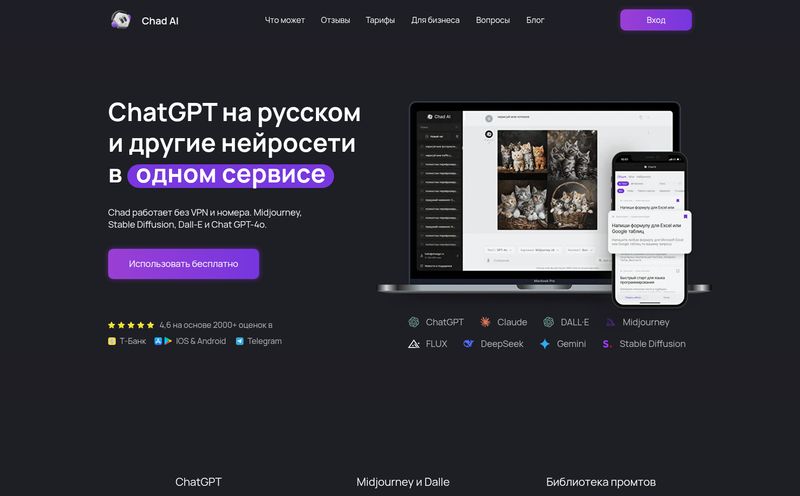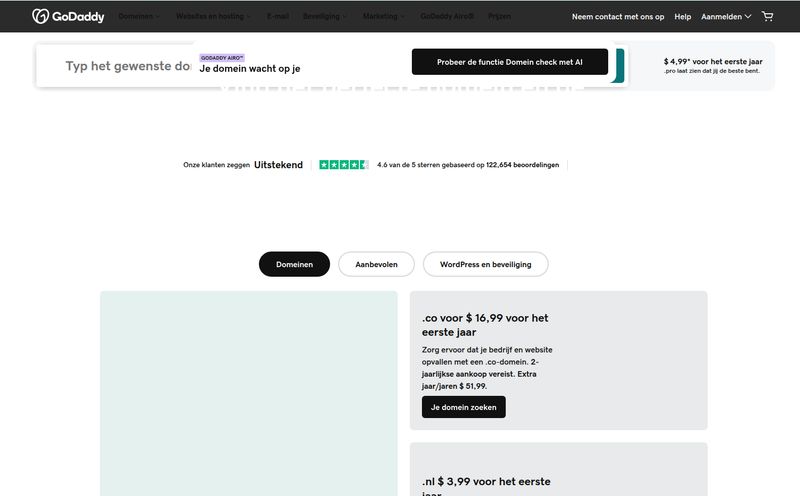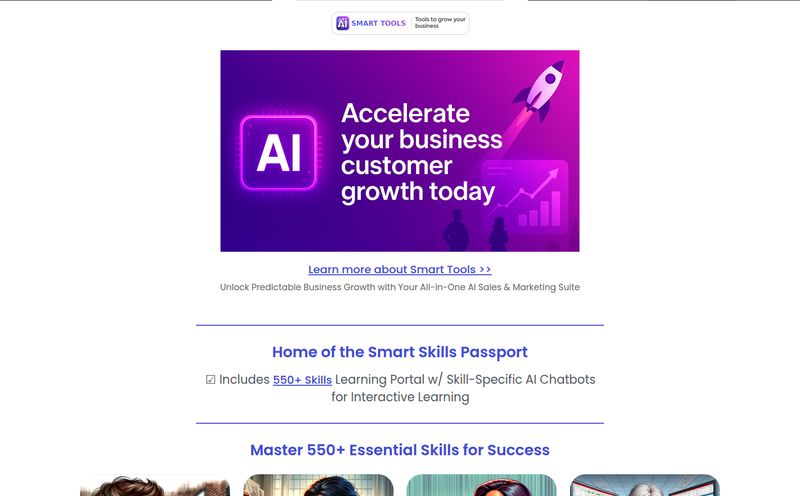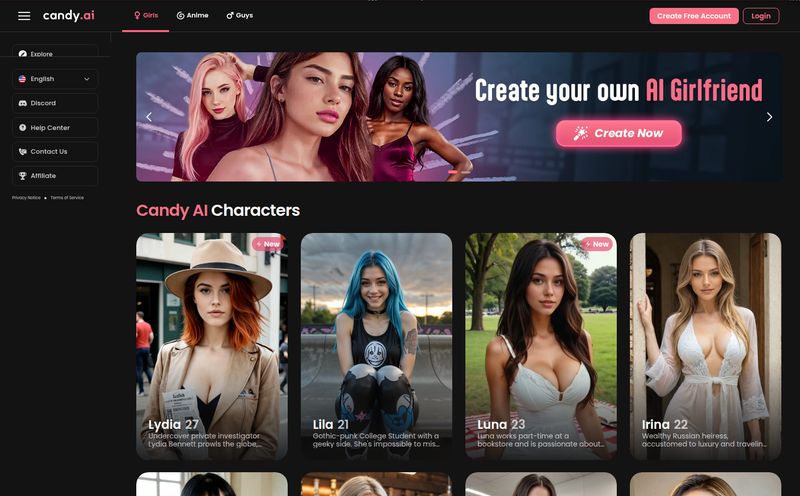We’ve all been there. Staring at a chat window, music on a maddening loop, with a little message that says, “You are number 42 in the queue. Your estimated wait time is… longer than your lunch break.” It’s frustrating. As customers, we hate it. As business owners, we dread putting our own customers through it.
For years, the solution has been to either hire a massive support team (expensive!) or just accept that you can’t be available 24/7. But the game is changing. The rise of surprisingly smart AI has thrown a new player onto the field, and I've been keeping a close eye on tools that claim to solve this age-old problem. One that recently caught my attention is called, quite simply, AI Chatbot Support.
Now, I know what you’re thinking. Another chatbot? The kind that gets stuck in a loop asking you to rephrase your question? I was skeptical too. But this one feels a bit different. Let’s get into it.
What Exactly is AI Chatbot Support?
Think of this tool less as a simple website pop-up and more as a central command center for all your customer conversations. The big promise of AI Chatbot Support is that it creates a single, unified system for handling inquiries from, well, everywhere. We're talking about your website chat widget, sure, but also your Facebook Messenger, Instagram DMs, X (formerly Twitter), Google Business Profile messages, WhatsApp, Telegram... you get the picture. It's a multi-platform beast.
Instead of having five different browser tabs open, frantically trying to keep up, everything is funneled into one dashboard. It offers a mix of a fully autonomous AI agent and a live chat system for when a human needs to step in. For someone like me who's juggled client comms across a dozen channels, that idea alone is pretty appealing.
The Features That Actually Matter
A long list of features is nice, but what really works? After looking through what AI Chatbot Support offers, a few things stood out to me as genuinely useful for businesses trying to scale their traffic and conversions.
An AI That Learns From You
This is the core of the whole thing. The chatbot isn't just pre-programmed with generic responses. You train it on your own data. You can feed it your website pages, upload PDFs of your product manuals, paste in your entire FAQ section—basically, any text that holds your company's knowledge. It then uses this to build its brain. This is powered by OpenAI's models (yes, the same tech behind ChatGPT), so it's got some serious horsepower.
A quick heads-up: this means you will need your own OpenAI API key. It’s a small technical step, but a crucial one. The quality of your chatbot's answers will be a direct reflection of the quality of the information you give it. Garbage in, garbage out, as they say. So a little effort here goes a long way.
One Inbox to Rule Them All
I can't overstate how much I like this. The unified messaging dashboard is a sanity-saver. A customer asking a pre-sale question on Instagram gets the same quality of response as someone on your website's live chat. And when you need to take over the conversation, it’s all in one place. No more “Oh shoot, I forgot to check the Facebook page messages for three days.” It turns a chaotic mess of notifications into a streamlined workflow. It's the kind of thing that seems small but ends up saving hours every week.
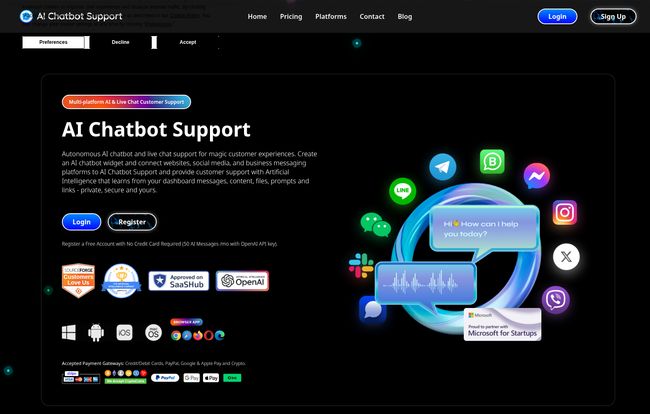
Visit AI Chatbot Support
When a Human Touch is Needed
Let's be real, AI can't solve everything. Sometimes a customer has a unique issue or is just too frustrated to deal with a bot. AI Chatbot Support has a built-in live chat system. The AI can handle the first wave of common questions, and if it gets stuck or the customer asks for a person, it can seamlessly hand the conversation over to a human agent. This hybrid approach, in my experience, is the sweet spot. You get the efficiency of automation without sacrificing the personal connection that builds real customer loyalty.
Let's Talk Money. A Look at the Pricing
Alright, the all-important question: what does it cost? The pricing structure is pretty straightforward, which I appreciate. They offer four main tiers, and they also have a toggle for a yearly plan that gives you two months free—a nice incentive.
Here’s a quick breakdown of their monthly plans:
| Plan | Price (Monthly) | Key Features |
|---|---|---|
| Startup | €14.99 | 250 messages, 2 agents, 2M training characters |
| Business | €39.99 | 1000 messages, 4 agents, 3.5M training characters |
| Pro | €99.99 | 5,000 messages, 10 agents, 7M training characters |
| Enterprise | €299.99 | 25,000 messages, 50 agents, 35M training characters |
My take? The Startup plan is a fantastic entry point. For less than the cost of a few fancy coffees, a small business or solopreneur can have a 24/7 support agent. That’s a pretty powerful proposition. The Business and Pro plans look solid for companies that are growing and have higher traffic volumes and a small support team. And of course, Enterprise is there for the big guns. You can check out the full details on their pricing page.
Setting It Up: Is It Really That Easy?
The website claims it’s “Easy to setup.” From what I can see, the process seems manageable for most people, even if you’re not super techy. It boils down to a few steps: sign up, connect your social media and messaging accounts, upload or link to your training data, and pop in your OpenAI key. It’s not a one-click-and-done affair, but it certainly doesn’t look like you'll need to hire a developer. It feels more like a weekend project that could pay dividends for months.
The Good, The Bad, and The AI
No tool is perfect. Let's weigh the pros and cons from a real-world perspective.
What I really like is the multi-platform integration. That is, without a doubt, its killer feature. The ability to have one AI assistant handling everything from your website to your WhatsApp is a huge win. The 24/7 availability and the potential for white-labeling it for clients (hey, fellow agency owners!) are also massive pluses.
On the flip side, the dependency on your own training data is a double-edged sword. If your documentation is a mess, your chatbot will be too. It puts the onus on you to be organized. The requirement of an OpenAI API key might also be a small hurdle for complete beginners, though it's a pretty standard practice for tools like this. And obviously, it's a subscription service, so it's an ongoing cost to factor into your budget.
Who is This Tool For, Really?
After digging in, I see a few groups who would get a ton of value from AI Chatbot Support. First, e-commerce stores. Imagine being able to instantly answer questions about shipping, returns, and product specs, even at 3 AM. Second, marketing agencies. The ability to offer a white-labeled, 24/7 support solution to multiple clients from one dashboard is a powerful service offering. Finally, any small to medium-sized business that feels like they're drowning in customer questions and wants to improve their service without tripling their headcount. Stats from places like HubSpot constantly show that quick response times are a major factor in customer satisfaction.
Frequently Asked Questions About AI Chatbot Support
- Do I absolutely have to use my own OpenAI API key?
- Yes, you do. The tool's AI capabilities are powered by OpenAI's models, so your key is what connects your chatbot to its 'brain'. This also means your usage costs with OpenAI are separate from your subscription to AI Chatbot Support.
- What happens if the AI gets confused or can't answer a question?
- That's where the live chat feature comes in. You can set it up so that if the AI is unsure, or if the user types 'speak to a human', the conversation is automatically flagged and routed to one of your human agents in the unified dashboard.
- Can I really use this on my business Instagram and WhatsApp?
- Yes, that's one of teh main selling points. It integrates directly with the APIs for these platforms, allowing your single AI bot to handle conversations there just as it would on your website.
- Is it difficult to train the AI?
- The process itself is simple—you're mostly just pointing it to URLs or uploading documents. The difficulty comes from how organized your information is. If you have clear, well-written FAQs and documentation, the training will be a breeze and very effective.
- What if my business grows and I need more messages or agent accounts?
- The plans are designed to be scalable. You can simply upgrade from the Startup plan to the Business or Pro plan right from your dashboard as your needs change.
My Final Thoughts
So, is AI Chatbot Support the magic bullet for customer service? No single tool is. But it is a seriously compelling and well-thought-out solution that tackles a very real, very common business problem. It's not just a fancy tech toy; it's a strategic asset for managing customer communication.
The combination of a trainable AI, a unified inbox across all major platforms, and the safety net of live chat creates a powerful system. For businesses feeling the pressure of the 'always-on' economy, this could be the difference between being overwhelmed and being on top of your game. It’s definitely a contender worth watching in the customer support space.
Reference and Sources
- AI Chatbot Support Official Website
- Official Pricing Page
- OpenAI API Key Management
- HubSpot's Customer Service Stats and Trends
